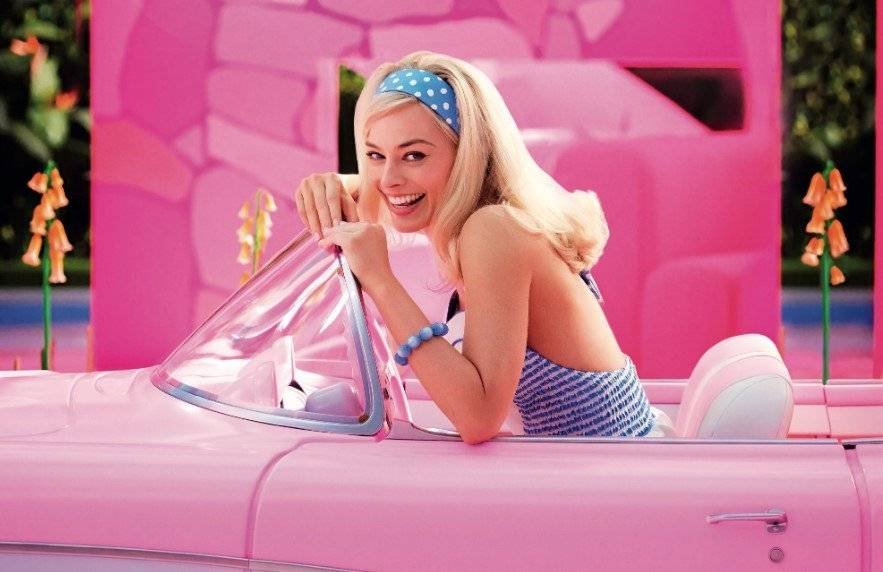Barbie, the iconic doll beloved by generations, has transcended the toy industry to become a global cultural phenomenon. Over the years, Barbie has evolved to reflect changing societal norms and has consistently remained relevant. The recent release of a new Barbie movie has once again demonstrated the brand’s prowess in marketing and storytelling. In this article, we will delve into the marketing strategy that contributed to the success of the latest Barbie movie.
Barbie has managed to capture the hearts of both children and adults by combining nostalgia with continuous reinvention. The brand has maintained its classic appeal while adapting to the demands of modern audiences. The latest movie leveraged the nostalgia of the older audience, enticing them to revisit the magical world of Barbie while also captivating the younger generation with a fresh take on the character.
Delve into Barbie’s $150 Million Marketing Strategy:
The marketing approach for the “Barbie” movie was a whirlwind of pink, boasting an impressive budget of $150 million, as reported by Variety. Surprisingly, this budget even outpaced the $145 million used for the movie’s production.
The marketing campaign displayed sheer creativity and expansiveness, encompassing various initiatives. They launched a dedicated website that allowed fans to design custom “Barbie” posters, collaborated with insurance company Progressive for a commercial shot on the movie set, teamed up with Airbnb to construct a life-size replica of Barbie’s Malibu dream house, and even partnered with Burger King Brazil to introduce a unique pink burger.
In essence, the marketing strategy was a grand display of innovation and partnership, fueling the anticipation and excitement surrounding the iconic “Barbie” brand.
Airbnb x Barbie

Source: https://www.smithsonianmag.com/smart-news/barbie-malibu-dreamhouse-airbnb-180982482/
Burger King x Barbie

Fashion Brand x Barbie

Source: https://campaignme.com/how-a-marketing-strategy-turned-the-whole-world-pink/
Are You Prepared for the Pink Storm?
The marketing strategy for the “Barbie” movie transcended the boundaries of traditional advertising, becoming a true cultural phenomenon. Josh Goldstine, Warner Bros.’ president of global marketing, observed that the campaign transformed into a dynamic cultural movement, attracting brands eager to be a part of it.
Lisa McKnight, Vice President of Mattel, highlighted the lasting impact of the “Barbie” movie beyond its initial buzz. She expressed excitement about the new fans the movie would attract after its release, as well as the reshaped perception and image of the Barbie brand in consumers’ minds.
The movie serves as a platform to redefine people’s perceptions, moving towards inclusivity and diversity, as emphasized in this article. This strategic shift is expected to resonate with a broader audience, further cementing Barbie’s position in popular culture.
Fans enthusiastically embraced the film’s marketing campaign, creating memes comparing the promotional expenses for “Barbie” with its competitor, “Oppenheimer,” which premiered on the same day. This tactic showcased the power of engaging marketing that connects with the audience, transforming a mere promotional effort into a cultural conversation.
The results speak for themselves, as “Barbie” enjoyed the biggest opening weekend of 2023 at the US box office. “Oppenheimer,” and ‘’Barbie’’ achieved the fourth-largest collective box office turnout in US history. It is the highest turnout since the pandemic began. “Barbie” grossed an impressive $155 million in the US. It has achieved a staggering $337 million globally during its opening weekend.
Leveraging Social Media and Digital Platforms
As technology rapidly evolved, Mattel didn’t hesitate to incorporate digital marketing strategies to connect with its target audience effectively. Barbie’s social media presence became more pronounced, engaging with fans on platforms like Instagram, YouTube, and TikTok. These platforms allowed Barbie to interact with her audience, share inspirational stories, and foster a community of like-minded individuals. Additionally, Mattel launched interactive websites and online games that not only promoted Barbie but also provided educational content to encourage learning and creativity.
The essence of IP (Intellectual Property)
The essence of IP (Intellectual Property) marketing revolves around consistently delivering tangible, customized content, which helps the brand stand out and remain memorable. This approach, reminiscent of the development of iconic characters in classic films and television, ensures that the brand holds significant communicative power and influence. The movie “Barbie” brilliantly employed this strategy, achieving remarkable success.
Through collaborations with more than 100 brands and numerous associated products, the marketing campaign unleashed a global phenomenon known as the Barbie Pink Storm, significantly enhancing its visibility. The campaign also harnessed the power of viral social marketing, as hashtags such as #barbie and #barbiegirl trended across various social media platforms.
Collaborations and Partnerships
To keep Barbie fresh and appealing to new audiences, Mattel ventured into numerous collaborations and partnerships with prominent brands and influencers. These partnerships served as a means to introduce Barbie to new demographics and reinforce the brand’s message of empowerment. By collaborating with powerful role models and organizations, Mattel aligned Barbie’s image with messages of positivity and inclusivity.

Source: https://shop.mattel.com/collections/barbie
Cause Marketing and Social Responsibility
In today’s socially conscious world, consumers increasingly seek out brands that align with their values. Mattel recognized this shift and incorporated cause marketing and social responsibility into Barbie’s marketing strategy. Barbie campaigns have addressed significant social issues, such as gender equality, education, and environmental sustainability. By taking a stand on these matters, Mattel positions Barbie as a symbol of positive change and encourages young girls to be socially responsible and aware.
Enhancing Brand Value and Fostering Consumer Resonance and Loyalty
Intellectual Property (IP) offers more than just the functional aspects of a product; it also serves as an emotional conduit. Essentially, IP embodies a company’s persona, carrying its brand personality and allure. An effective IP must possess vibrant personality traits akin to a living “person,” complete with a captivating life, compelling stories, and relatable emotions.

Since 2016, Barbie dolls have undergone a remarkable transformation, representing various body types, skin colors, and outfits. Evolving with culture and societal norms, Barbie has shifted from a fashionable and delicate female image to a diverse, empowered, and positive character. The Barbie brand now embraces the beauty of diversity, encouraging girls to pursue the life they desire.
The utilization of IP broadens the brand’s cultural expression and value, forging emotional connections with consumers. This ultimately cultivates unwavering consumer loyalty, transforming them into devoted “die-hard fans.” As one of today’s best-selling toys, the Barbie doll’s brand collaborations can generate significant traction.
The wealth of IP content allows for the transition from merely selling toys to selling a compelling IP experience. The once virtual idol Barbie has now come to life through live-action movies and partnerships, breaking through the second dimension and drawing closer to consumers’ real lives, thus further solidifying their loyalty.
As Matthew Hayes highlights on LinkedIn, Barbie’s iconic marketing strategy serves as a lesson in brand evolution. Barbie has maintained relevance and adoration by continuously adapting to the times.
Conclusion
In conclusion, the marketing approach employed for the “Barbie” movie stands as an exemplary demonstration of effective brand promotion and cultural relevance. With a budget surpassing the movie’s production costs, the campaign successfully sparked a cultural phenomenon, resulting in a highly successful box office debut. The “Barbie” movie’s strategy exemplifies the importance of comprehending one’s audience and adapting to the changing times.




